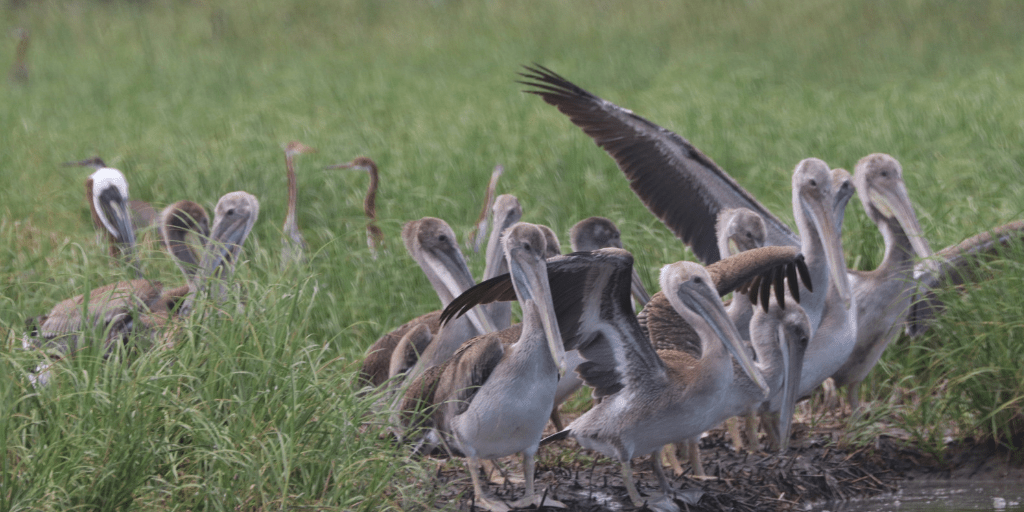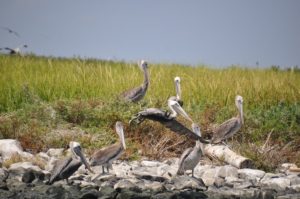We have much more to do and your continued support is needed now more than ever.
Big Plans for a Tiny Island


In the Gulf of Mexico, the National Wildlife Federation works to identify and advocate for sound investment of money from the BP oil spill settlement into restoration projects that will help wildlife and habitats recover from the oil spill and improve the long-term health and resilience of the Gulf. In Louisiana, that usually means advocating for large-scale restoration projects, like sediment diversion projects that reconnect the river with its delta, which are needed to address Louisiana’s land-loss crisis. However, sometimes smaller projects, like increasing the size and diversity of birds habitat on Queen Bess Island, are needed to address specific injuries to birds and other wildlife from the spill and can improve the long-term health of the Gulf.
Lasting Consequences from the BP Oil Spill
The Deepwater Horizon oil spill in 2010 was catastrophic for birds, killing scores and causing widespread reproductive failure. Some studies have suggested more than a million birds died as a result of the spill. Oil also coated thousands of miles of beach and marsh shoreline that are critical habitat for numerous residential and migratory bird species in the region. A restoration project is in the planning stages to revitalize the habitat and bird populations impacted by the oil spill in Louisiana by increasing the size of Queen Bess Island, an important bird island. The project would grow the island from 5 acres to 37 acres, providing nesting and brood-rearing habitat for colonies of waterbirds.
Queen Bess Island Gets Habitat Restoration Project

The tiny Queen Bess Island in Louisiana’s Barataria Basin is an important bird rookery – the third largest in Louisiana – with ten different bird species making roughly 4,000 nests there annually. One of the species that makes its home on Queen Bess is the brown pelican, an Endangered Species Act success story. Teetering on the brink of extinction in the 1960s, the iconic state bird of Louisiana had nearly disappeared from the Gulf coast. Efforts to create, protect, and restore nesting islands, the banning of the pesticide DDT, and a reintroduction program that released fledglings from Florida onto bird islands in Louisiana – including Queen Bess – all played an important role in the recovery of the species. In 2009, brown pelicans were removed from the Endangered Species List — but they continue to be threatened by oil spills and habitat destruction.
The Louisiana Trustee Implementation Group, which is comprised of state and federal agencies that plan and carry out projects to address oil-spill impacts, is currently planning a project to address oil spill injuries to birds by increasing bird habitat on Queen Bess Island. They plan to restore and build 30 acres of brown pelican habitat, and 7 acres of tern and skimmer bird habitat. This project helps bird populations recover by expanding and diversifying habitat for nesting and brood-rearing. The job of restoring the Gulf is far from complete, but the Queen Bess Island Restoration project gets us a little closer to reinvigorating an area that is vital to the well-being of birds along the Gulf Coast and beyond.
Louisiana loses one football field of land every 100 minutes. Please give to support our coastal restoration and other work in the Gulf of Mexico.




















